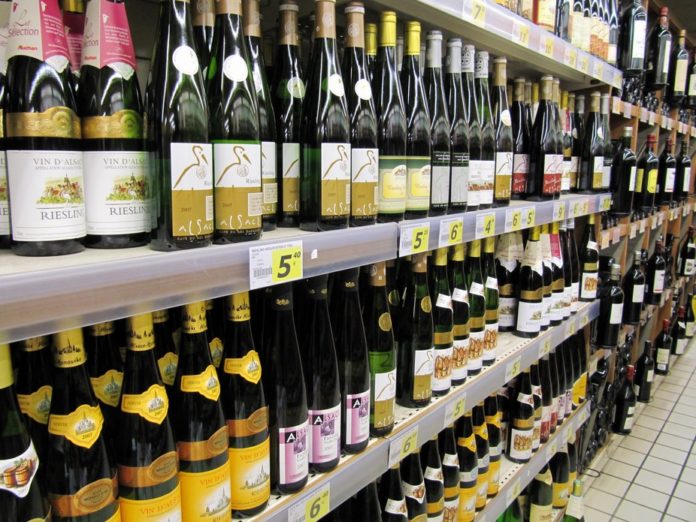
Marianne McGarry Wolf, California Polytechnic State University
Most wine purchasers are dazed and confused as they wander the aisles of their local wine shop. There are thousands of wine brands and dozens of types of wines lining the shelves. Obviously wineries want purchasers to pick their bottle. So they’ve done a lot of research into what makes a buyer choose a particular wine – and it turns out the labels have at least something to do with it, at least for 71% of US wine consumers.
What’s on the front

Interestingly, wine drinkers claim they don’t find “has an animal on it” to be a very desirable advantage for a wine label. But five of the nine top-selling wines in 2005 in the US sported animals on their labels. And wine drinkers in our survey rated as second-most attractive a label with an animal – Yellow Tail, with its vibrant picture of a wallaby.

The label that achieved the highest rating for attractiveness was Twin Fin, with its colorful picture of a classic convertible with a surfboard near the beach. The top two labels delivered on the characteristics wine drinkers say they like: eye-catching, unique, stylish, creative, clever and colorful.
In an effort to attract the youngest wine drinkers – the millennials – wineries have upped the colorful, wacky and creative design elements on their labels. Interestingly, in a cross-generational survey of the importance of attractiveness, millennials and baby boomers both rated a wine label’s appearance more important to them than generation Xers did. For the most part, wine drinkers of all ages agreed which labels were most attractive. So it’s not only the millennials who are attracted to colorful and creative labels.

Although generations may agree on what label features reel them in, there are some differences between male and female preferences. My research group asked men and women to rate nine wine label logo features:
- has an animal on it
- bold
- eye-catching
- simple
- ornate
- creative
- classic
- intriguing
- colorful
Women preferred more creative, eye-catching, colorful and ornate wine labels than men did. Similarly, women rated plain, less colorful logos lower in attractiveness than men did. Wineries have used this kind of data to create wines targeted specifically to female drinkers. Some of those include Middle Sister, Cupcake, Girls Night Out and Mommy Juice.

Jason Eberle, CC BY-NC-ND
What’s on the back
How important is the information on the back label of wine bottles to consumers? Almost half of the wine drinkers surveyed – 49% – said the words on the back label are at least somewhat important to their purchase decision. Further, 55% said they read a wine bottle’s back label at least somewhat often. But what’s the most desirable kind of info to print back there?
Wineries asked consumers if they wanted:
- descriptions of flavors and aromas
- interesting information about the winery
- explanations of food pairings
- history of the winery
- a story about the wine
- growing region features
- climate of the vineyard
- winery website
- a story about the wine maker
- the winery location
- humorous information
- wine-making practices
- vineyard’s soil
- romantic story
Consumers indicated that a description of flavors and aromas of the wine on the back label is the most important information. They simply want to know what to expect from the wine. That’s more valuable to consumers than information about the winery, food pairings, history of the winery or history of the wine.
To go one step further, we had consumers evaluate four specific back label concepts for a new wine. They looked at four themes for the back label: flavors and aromas, award-winning wines, growing region climate and a romantic story about the winery. As before, it was the flavor and aroma description that consumers said would probably increase their likelihood to purchase the wine. Awards and climate information may increase purchase. The romantic story did not increase purchase interest.
Wine has evolved over the past decade from a drink that exclusively was paired with food, to one that is now a beverage for all occasions – dining, socializing, relaxing and celebrating. When wine was simply an accompaniment for food, labels could be dull and descriptive. But now their enhanced logos, images and romantic stories reflect these new uses.
This article is part of The Conversation’s holiday series on wine. Click here to read more articles in the series.
![]()
Marianne McGarry Wolf, Interim Department Head and Professor of Wine and Viticulture, California Polytechnic State University
This article was originally published on The Conversation. Read the original article.




















